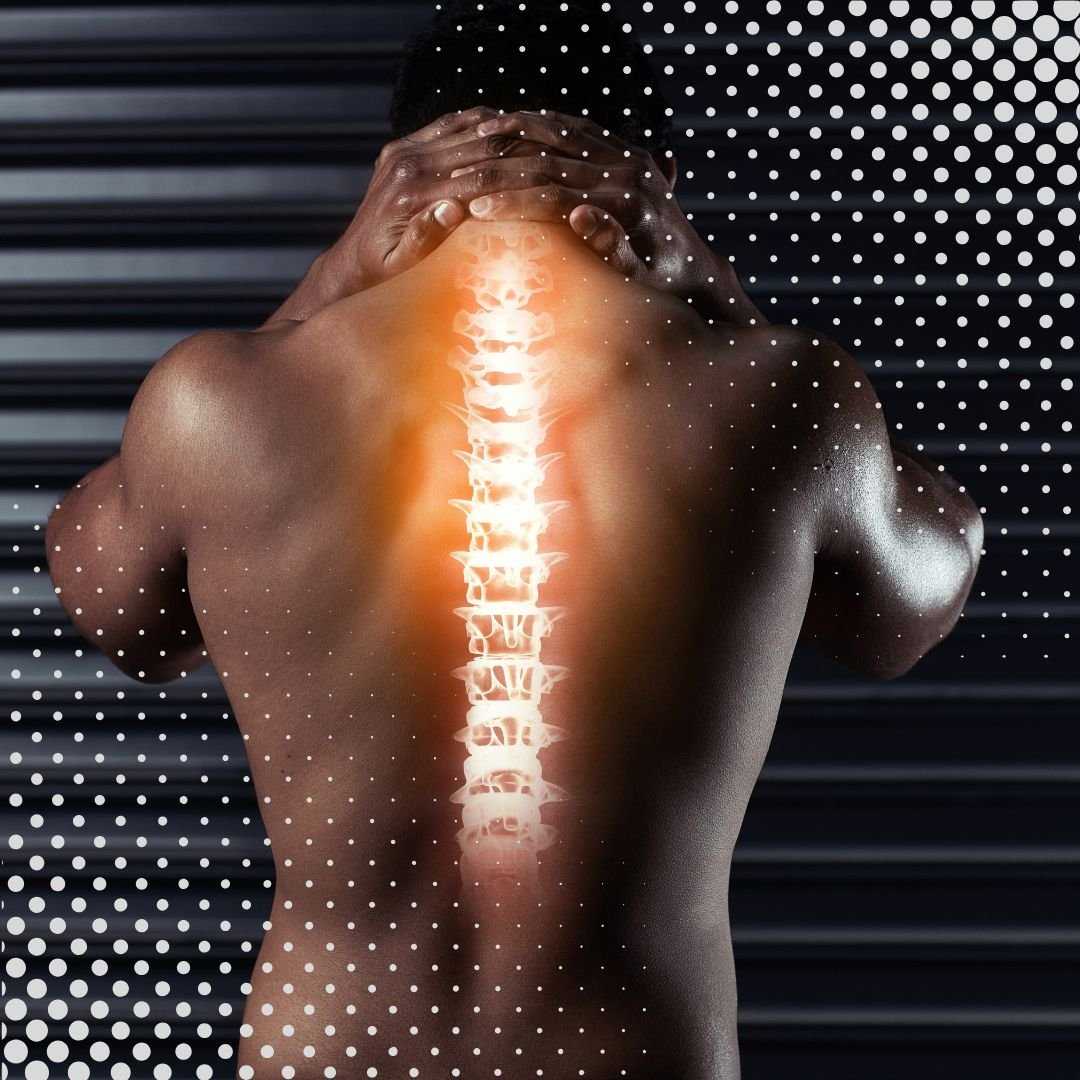
Rediscover Clear Sound: Your Guide to Ear Microsurgery and Medical Travel
Experiencing persistent ear pain, recurring infections, or a decline in your hearing can significantly impact your daily life, making simple conversations or enjoying music a challenge. When conservative treatments like medication or ear drops aren't enough, advanced solutions like ear microsurgery can offer a path to relief and improved ear health. This highly specialized field uses powerful microscopes and delicate instruments to address complex issues within the ear, often restoring hearing and preventing further complications.
For many, the thought of ear surgery brings questions about effectiveness, recovery, and perhaps most importantly, cost. This is where medical tourism often becomes a beacon of hope. Patients worldwide are increasingly looking beyond their borders to find high-quality, affordable ear microsurgery options. Whether it's to address a bothersome perforated eardrum, manage a persistent condition like cholesteatoma, or improve hearing due to otosclerosis, understanding your options is the first step towards a clearer, quieter, or more vibrant world.
This guide will walk you through everything you need to know about ear microsurgery, from identifying the symptoms and causes to understanding the different procedures, recovery expectations, and why choosing to travel abroad for your treatment might be the best decision for your health and your wallet.
What symptoms indicate you might need ear microsurgery?
Recognizing the signs that your ear issues might require surgical intervention is crucial. It’s not just about discomfort; prolonged problems can lead to more severe complications. Here are common symptoms that often lead to a recommendation for ear microsurgery:
- Persistent Hearing Loss: Whether it's conductive (sound waves not reaching the inner ear) or sensorineural (damage to the inner ear), significant or progressive hearing loss is a primary indicator. You might struggle to hear conversations, music, or notice a general muffling of sounds.
- Chronic Ear Discharge (Otorrhea): If your ear frequently drains fluid, pus, or blood, especially after an infection or injury, it could signify a perforated eardrum or a chronic middle ear infection.
- Recurrent Ear Infections (Otitis Media): Multiple episodes of painful ear infections, particularly in adults, can indicate underlying structural problems or chronic inflammation that medication alone cannot fix.
- Ear Pain: While acute ear pain usually accompanies infections, persistent or severe earaches, even without obvious infection, can be a symptom of conditions like cholesteatoma or pressure buildup.
- Tinnitus: A persistent ringing, buzzing, or hissing sound in the ear, especially if it's new or worsening, can sometimes be linked to issues that microsurgery can address.
- Vertigo or Dizziness: While often associated with inner ear disorders, some middle ear conditions can also impact balance, leading to feelings of spinning or instability.
- Feeling of Fullness or Pressure: A constant sensation of pressure or blockage in the ear, often accompanied by muffled hearing.
If you experience any of these symptoms persistently, it's essential to consult an ENT specialist to determine the cause and appropriate treatment.
What are the common causes and risk factors for ear conditions requiring surgery?
Many factors can contribute to ear conditions that eventually require microsurgery. Understanding these can help in prevention or early diagnosis:
- Chronic Ear Infections (Chronic Otitis Media): Repeated acute infections can lead to permanent damage to the eardrum and middle ear structures, sometimes forming scar tissue or damaging the ossicles (tiny ear bones).
- Perforated Eardrum (Tympanic Membrane Perforation): This can result from severe ear infections, trauma (e.g., a direct blow to the ear, cotton swab injury), or sudden loud noises. A persistent hole can lead to recurrent infections and hearing loss.
- Cholesteatoma: This is a non-cancerous skin cyst that develops in the middle ear, often as a result of a chronic eardrum retraction. It can grow and erode surrounding bone, including the ossicles and mastoid bone, causing hearing loss, discharge, and even facial nerve damage if left untreated.
- Otosclerosis: A hereditary condition where abnormal bone growth occurs in the middle ear, fixing the stapes (stirrup bone) in place. This prevents sound vibrations from reaching the inner ear, leading to progressive conductive hearing loss.
- Damage to Ossicles: The three tiny bones (malleus, incus, stapes) in the middle ear can be damaged, dislocated, or eroded by chronic infections, trauma, or cholesteatoma, impairing sound conduction.
- Trauma: Direct injury to the ear, head trauma, or barotrauma (pressure changes, like from diving or flying) can damage the eardrum or middle ear bones.
- Congenital Conditions: Some individuals are born with structural abnormalities of the ear that may require surgical correction.
What specific types of ear microsurgery are available?
Ear microsurgery encompasses several distinct procedures, each tailored to specific conditions:
- Tympanoplasty: This procedure repairs a perforated eardrum (tympanic membrane). A graft (usually taken from the patient's own tissue, like fascia behind the ear) is used to patch the hole, aiming to restore hearing and prevent recurrent infections.
- Ossiculoplasty: If the tiny bones (ossicles) in the middle ear are damaged, dislocated, or eroded, ossiculoplasty reconstructs them. This might involve repositioning existing bones or replacing them with prosthetics made of ceramic or titanium to improve sound conduction.
- Mastoidectomy: This surgery removes infected or diseased bone in the mastoid (the bone behind the ear). It's typically performed for chronic mastoiditis or cholesteatoma that has spread to the mastoid bone, aiming to clear infection and create a safe, dry ear.
- Stapedectomy / Stapedotomy: Primarily performed to treat otosclerosis, this procedure involves removing the hardened or fixed stapes bone and replacing it with a tiny prosthetic device, allowing sound vibrations to once again reach the inner ear.
- Myringotomy with Tube Insertion: While less complex than other microsurgeries, this involves a small incision in the eardrum to relieve pressure or drain fluid, often followed by the insertion of a tiny tube (tympanostomy tube) to ventilate the middle ear, common for chronic middle ear fluid in children.
The choice of procedure depends entirely on the diagnosis and the specific pathology identified by your ENT specialist.
Who is an ideal candidate for ear microsurgery?
Deciding if ear microsurgery is right for you involves a thorough evaluation by an ENT specialist. Generally, ideal candidates share these characteristics:
- Diagnosis of a Surgical Condition: You have a confirmed diagnosis such as a persistent perforated eardrum, chronic middle ear infection, cholesteatoma, otosclerosis, or ossicular chain disruption.
- Failed Conservative Treatments: Non-surgical approaches (medications, ear drops, observation) have not resolved the issue or are deemed insufficient to prevent further complications.
- Good General Health: You are in good overall health, without serious uncontrolled medical conditions that would increase surgical risks (e.g., severe heart disease, uncontrolled diabetes).
- Realistic Expectations: You understand the potential outcomes, recovery process, and possible risks associated with the specific surgery.
- Commitment to Post-Operative Care: You are prepared to follow all post-operative instructions, including avoiding water in the ear, restrictions on physical activity, and attending follow-up appointments.
Certain conditions, like active acute infections or severe underlying health issues, might temporarily or permanently preclude someone from being a candidate. Your surgeon will discuss your medical history and conduct diagnostic tests to determine your suitability.
What is the typical recovery time and what can I expect after ear microsurgery?
Recovery from ear microsurgery is a gradual process, and the specific timeline can vary depending on the type of procedure performed and individual healing rates. However, here's a general overview of what to expect:
- Immediate Post-Op (First Few Days):
- Pain and Discomfort: You will likely experience some mild to moderate pain, which can be managed with prescribed painkillers.
- Dizziness/Vertigo: Some dizziness, lightheadedness, or even vertigo is common, especially after procedures involving the inner ear or mastoid. This usually subsides within a few days.
- Ear Packing: Your ear canal will typically be packed with cotton or dissolvable material, which will remain for 1-3 weeks. You'll also have a dressing over the incision site.
- Hearing Changes: Hearing may initially be worse due to swelling and packing, but it should gradually improve as healing progresses.
- Activity Restrictions: You'll be advised to rest, avoid heavy lifting, strenuous activity, and sudden head movements.
- First Few Weeks:
- Ear Care: Strict instructions on keeping the ear dry (no swimming, showering with ear protection) are paramount to prevent infection and ensure graft success.
- Follow-up Appointments: Your surgeon will remove packing and assess healing.
- Gradual Return to Activities: You can typically return to light activities and work (if non-strenuous) within 1-2 weeks, but avoid flying, heavy lifting, or vigorous exercise for several weeks.
- Long-Term (Several Months):
- Full Healing: Complete healing of the eardrum or middle ear structures can take 2-3 months.
- Hearing Improvement: The full extent of hearing improvement may not be evident until several weeks or months post-surgery, once all swelling has resolved and structures have stabilized.
- Continued Monitoring: Regular follow-ups may be required, especially for conditions like cholesteatoma, to monitor for recurrence.
Following your surgeon's specific instructions is critical for a successful recovery and optimal outcome.
What are the potential risks and side effects of ear microsurgery?
Like any surgical procedure, ear microsurgery carries potential risks and side effects, although serious complications are rare. Your surgeon will discuss these in detail before the procedure:
- Hearing Loss: While the goal is to improve hearing, there's a small risk of unchanged, worse, or even total hearing loss in the operated ear, especially with complex procedures or pre-existing severe damage.
- Dizziness/Vertigo: Temporary dizziness is common, but in some cases, persistent vertigo can occur, particularly if the inner ear is affected.
- Tinnitus: Pre-existing tinnitus may worsen or new tinnitus may develop, though this is often temporary.
- Facial Nerve Weakness or Paralysis: The facial nerve runs very close to the middle ear. Although extremely rare with experienced surgeons, damage can occur, leading to temporary or permanent facial weakness or paralysis on the same side as the surgery.
- Taste Disturbance: The chorda tympani nerve, which controls taste to the front of the tongue, also passes through the middle ear. It can be stretched or damaged during surgery, leading to temporary or, rarely, permanent altered taste sensation.
- Infection: Any surgery carries a risk of infection, though antibiotics are often given to minimize this.
- Graft or Repair Failure: In procedures like tympanoplasty, the graft used to repair the eardrum may fail to take, or the repaired ossicles may not heal correctly, requiring further surgery.
- Bleeding and Hematoma: Minor bleeding is normal, but excessive bleeding or blood clot formation can sometimes occur.
- Allergic Reaction: To anesthesia or medications.
It's important to weigh these potential risks against the benefits of alleviating symptoms and preventing further complications from your ear condition.
How does the cost of ear microsurgery compare globally?
One of the primary drivers for medical tourism is the significant cost difference for procedures without compromising quality. Ear microsurgery is a prime example:
Estimated Worldwide Cost Comparison for Ear Microsurgery (e.g., Tympanoplasty, Mastoidectomy, Stapedectomy)
| Region/Country | Estimated Cost Range (USD) | Key Factors Influencing Cost |
|---|---|---|
| USA / Canada | $5,000 - $20,000+ | High surgeon fees, hospital charges, anesthesia, insurance complexities. |
| UK / Western Europe | $4,000 - $15,000+ | Similar factors to North America; often lower due to public healthcare systems, but private care can be costly. |
| India | $2,000 - $6,000 | Lower cost of living, high volume of patients, competitive market, skilled surgeons. |
| Turkey | $2,500 - $7,000 | Strong medical infrastructure, government support for medical tourism, excellent hospitals. |
| Mexico | $3,000 - $8,000 | Proximity to USA, experienced surgeons, modern facilities, lower overheads. |
| Thailand | $2,500 - $7,500 | Renowned for patient care, world-class hospitals, established medical tourism industry. |
*Note: These are estimated ranges and can vary based on the specific procedure (e.g., tympanoplasty vs. stapedectomy), complexity, hospital reputation, surgeon's experience, and inclusions (e.g., pre-op tests, post-op care, accommodation). Always get a personalized quote.
Why consider ear microsurgery abroad for your treatment?
The decision to travel for medical care, especially for delicate procedures like ear microsurgery, is often driven by several compelling factors:
- Significant Cost Savings: As highlighted in the cost comparison, procedures abroad can be dramatically more affordable, often saving patients tens of thousands of dollars compared to their home countries, even when factoring in travel and accommodation.
- Shorter Waiting Times: In many countries with public healthcare systems, waiting lists for non-emergency surgeries can be long. Traveling abroad often allows for immediate scheduling and quicker access to necessary treatment.
- Access to Specialized Expertise: Some international hospitals and clinics specialize in specific fields, offering access to highly experienced surgeons and cutting-edge technology that may not be readily available or affordable locally.
- High-Quality Care and Facilities: Many medical tourism destinations boast JCI-accredited hospitals (Joint Commission International) with modern infrastructure, advanced equipment, and patient care standards comparable to or exceeding those in Western countries.
- Privacy and Anonymity: For some, undergoing a medical procedure away from home offers a level of privacy and discretion they might not find locally.
- Combining Treatment with Travel: The opportunity to recover in a pleasant environment or explore a new culture before or after treatment can make the experience less clinical and more holistic.
Which countries offer the best value and quality for ear microsurgery?
When seeking high-quality and affordable ear microsurgery, several countries consistently stand out:
- India: Known for its highly skilled medical professionals, state-of-the-art hospitals, and significantly lower costs, India is a global leader in medical tourism. Many Indian ENT surgeons have international training and experience.
- Turkey: With a rapidly growing medical tourism sector, Turkey offers world-class facilities, particularly in cities like Istanbul and Ankara. They excel in advanced surgical techniques and provide comprehensive packages often including accommodation and transfers.
- Mexico: A popular choice for North American patients due to its proximity, Mexico provides excellent medical care in modern hospitals, especially in border cities and major hubs like Mexico City and Guadalajara, often at a fraction of US costs.
- Thailand: Renowned for its hospitality and cutting-edge medical facilities, particularly in Bangkok and Phuket, Thailand offers a luxurious patient experience alongside top-tier medical expertise.
- South Korea: While sometimes pricier than other Asian options, South Korea is a technological powerhouse in medicine, offering highly advanced surgical techniques and excellent patient outcomes, particularly for complex cases.
- Colombia: Emerging as a strong contender in Latin America, Colombia boasts well-trained specialists and modern hospitals, providing quality care at competitive prices, especially in cities like Bogotá and Medellín.
Choosing the "best" country depends on your specific needs, budget, and desired travel experience. PlacidWay can help you navigate these options to find a clinic that aligns with your priorities.
What should I expect when traveling for ear microsurgery and how can I ensure a successful journey?
Embarking on a medical journey abroad requires careful planning and preparation. Here's what you should expect and how to ensure a smooth, successful experience:
- Pre-Trip Planning and Consultations:
- Remote Consultation: Most facilities will offer virtual consultations where you can discuss your condition, share medical records (MRI, CT scans, audiograms), and receive a preliminary treatment plan and cost estimate.
- Medical Evaluation: You'll undergo comprehensive pre-operative tests and evaluations upon arrival to confirm your diagnosis and fitness for surgery.
- Travel Logistics:
- Visa and Documentation: Check visa requirements for your chosen destination. Ensure your passport is valid and you have all necessary medical documents.
- Accommodation and Transportation: Plan for lodging near the hospital and reliable transportation. Many medical tourism packages include these.
- Language Barrier: Many international hospitals have English-speaking staff, but having a translation app or a local contact can be helpful.
- During and After Treatment:
- Hospital Stay: Expect a comfortable hospital stay, often with private rooms and dedicated nursing care.
- Recovery Abroad: Plan to stay in the country for the initial recovery phase (typically 1-3 weeks, depending on the procedure) for follow-up appointments and to ensure stable healing before flying.
- Post-Op Instructions: Adhere strictly to all post-operative care instructions, especially regarding ear dryness and activity restrictions.
How to Ensure Safety and Quality Abroad:
- Choose Accredited Facilities: Look for hospitals with international accreditations like JCI (Joint Commission International), which signifies adherence to global patient safety and quality standards.
- Verify Surgeon Credentials: Research your surgeon's experience, qualifications, board certifications, and specialization in ear microsurgery. Don't hesitate to ask for their CV or patient testimonials.
- All-Inclusive Packages: Opt for packages that clearly outline all costs, including consultation, surgery, hospital stay, anesthesia, medications, and follow-up care, to avoid hidden fees.
- Consider a Medical Tourism Facilitator: Companies like PlacidWay specialize in connecting patients with reputable international providers. They can help with clinic selection, travel arrangements, medical record translation, and provide support throughout your journey, significantly reducing stress and ensuring a smoother experience.
- Read Reviews and Testimonials: Look for feedback from other patients who have undergone similar procedures at your chosen clinic or with your selected surgeon.
By taking these steps, you can confidently navigate your journey for ear microsurgery abroad and achieve the best possible outcome for your ear health.
Take the Next Step with PlacidWay
Ready to explore treatment options abroad? Discover top clinics, compare prices, and get a free quote tailored to your needs with PlacidWay.





.png)
.png)
.png)
.png)

Share this listing